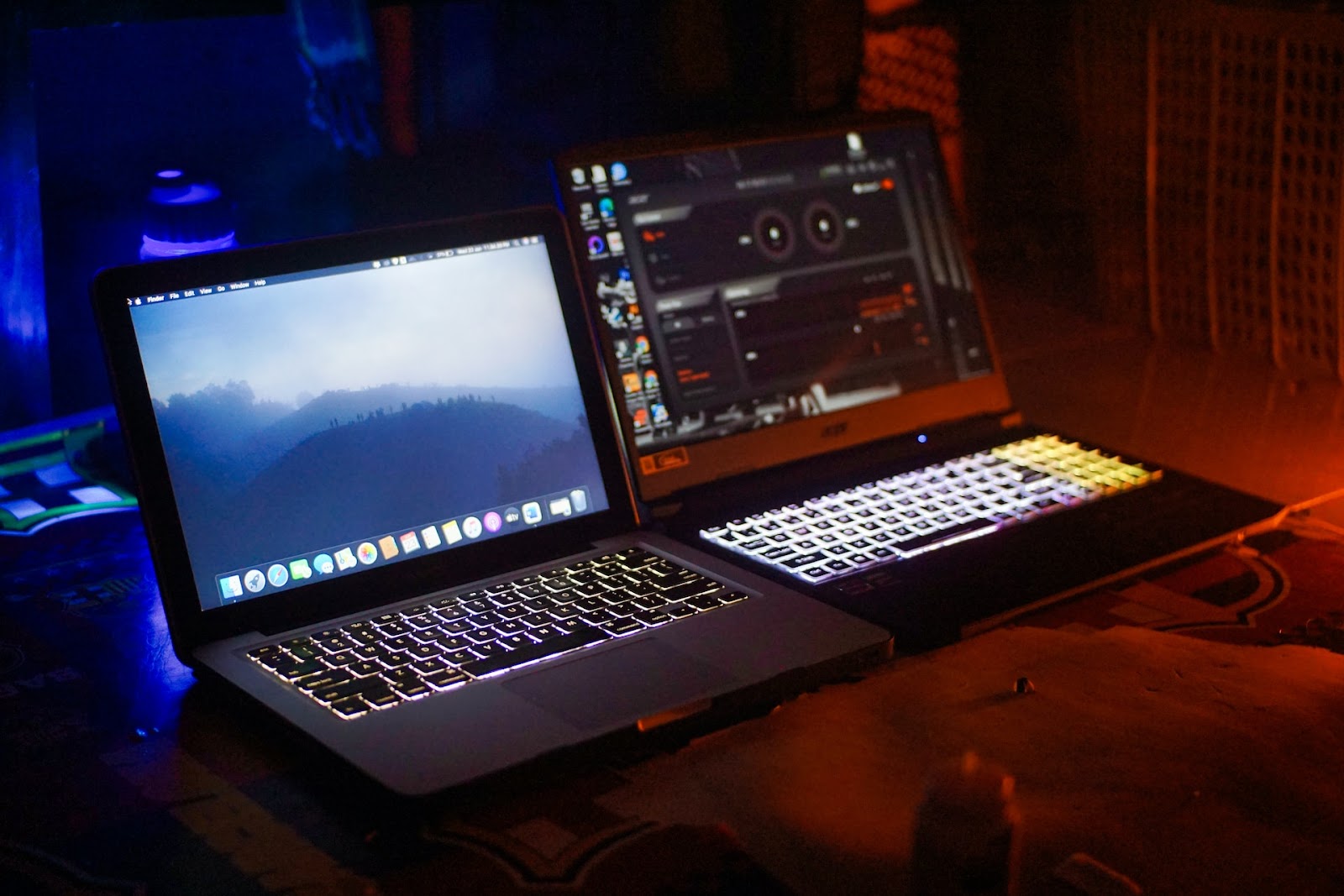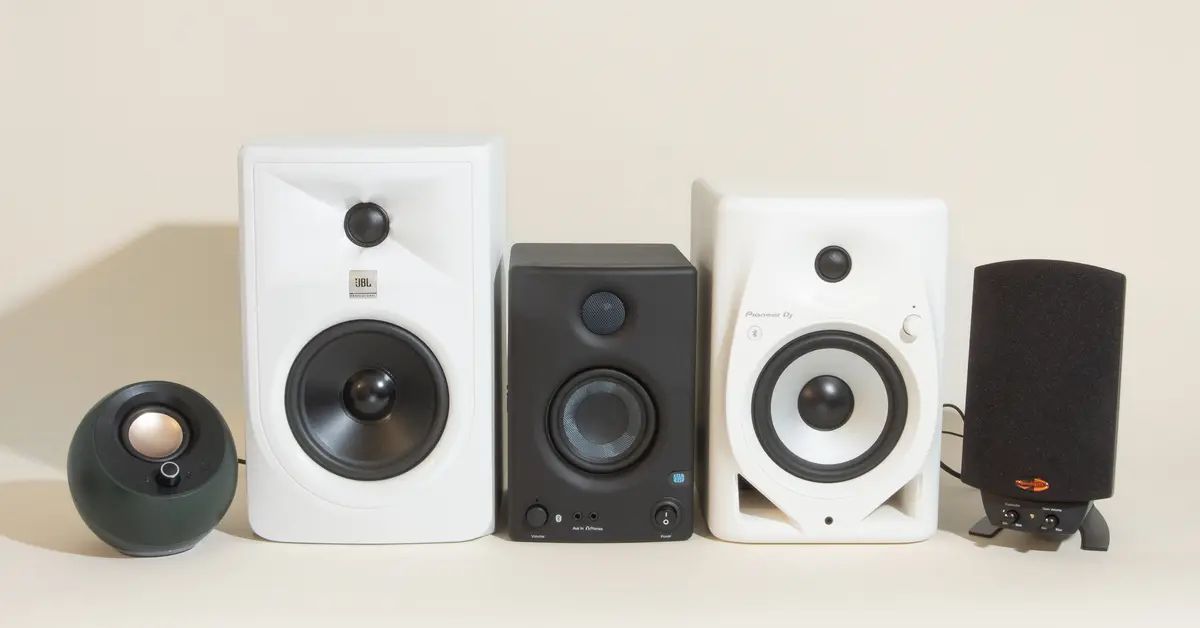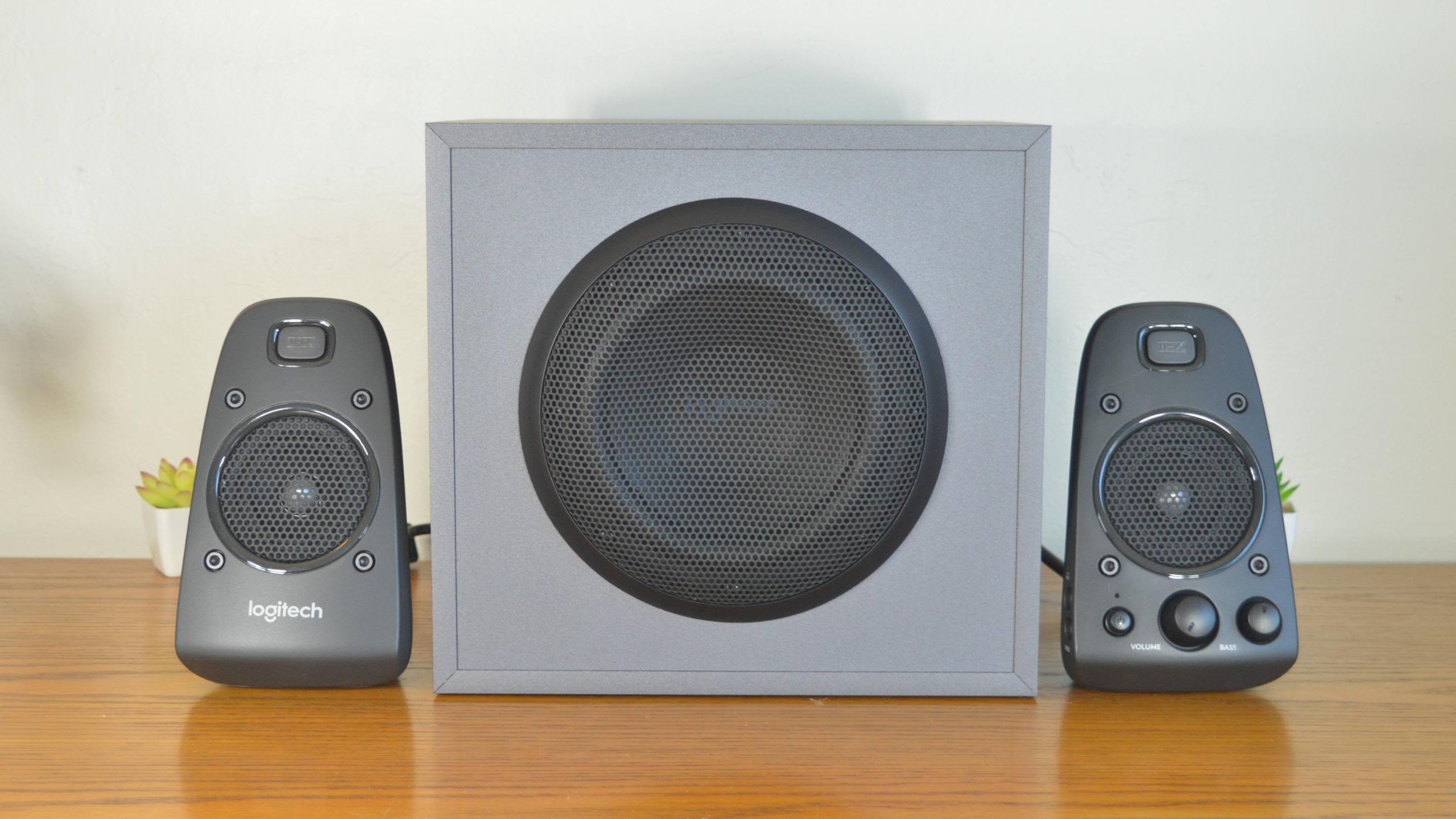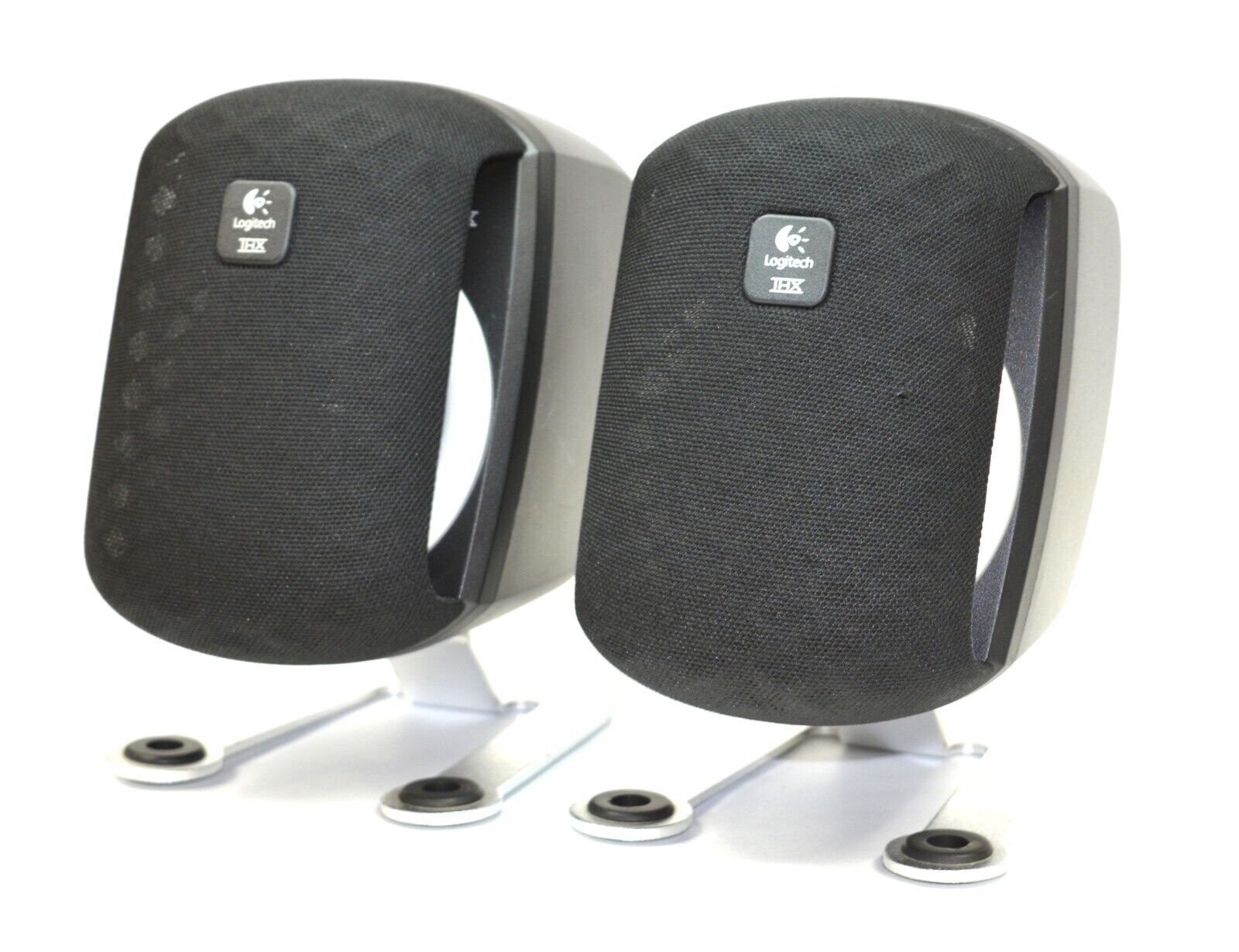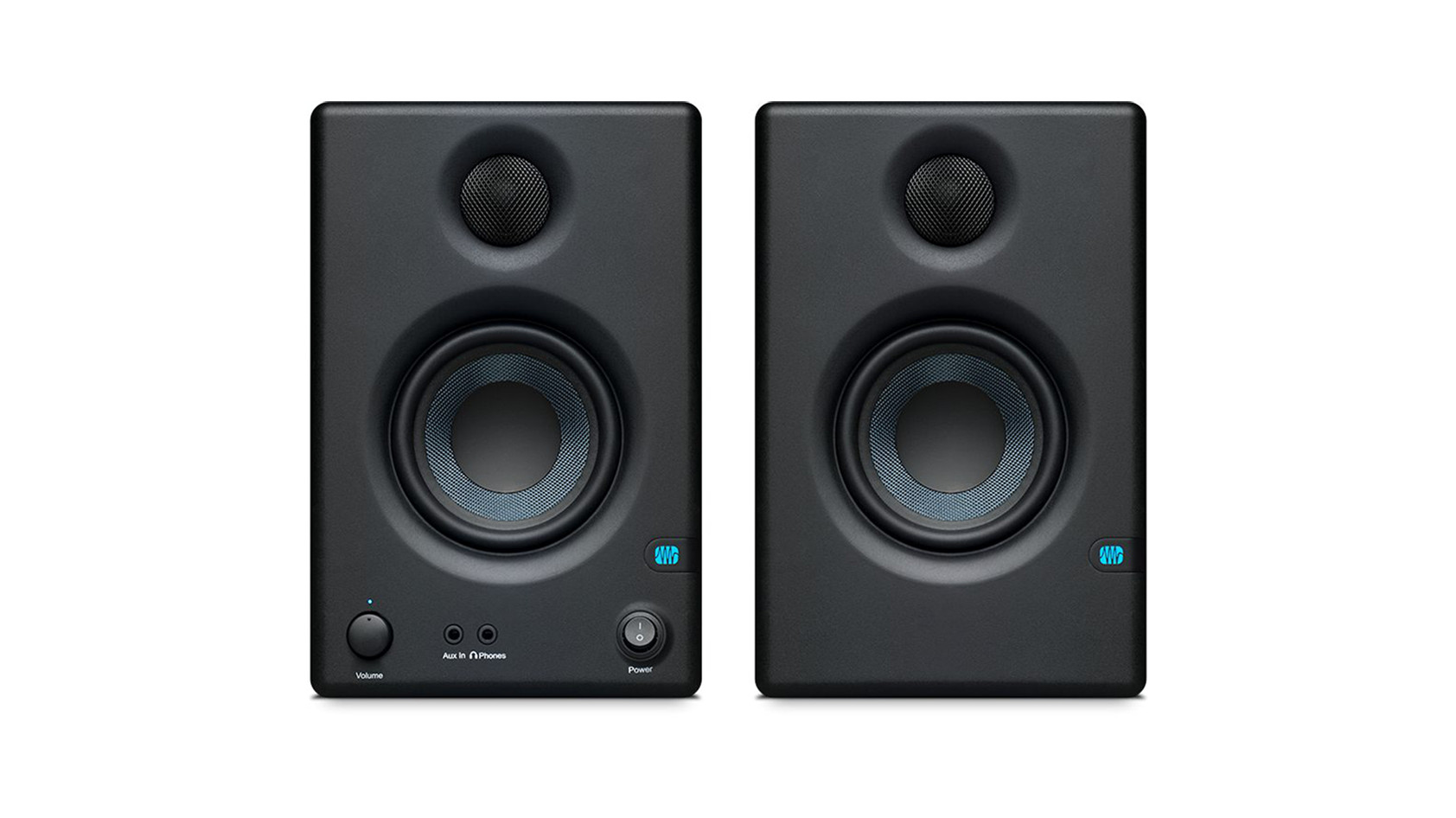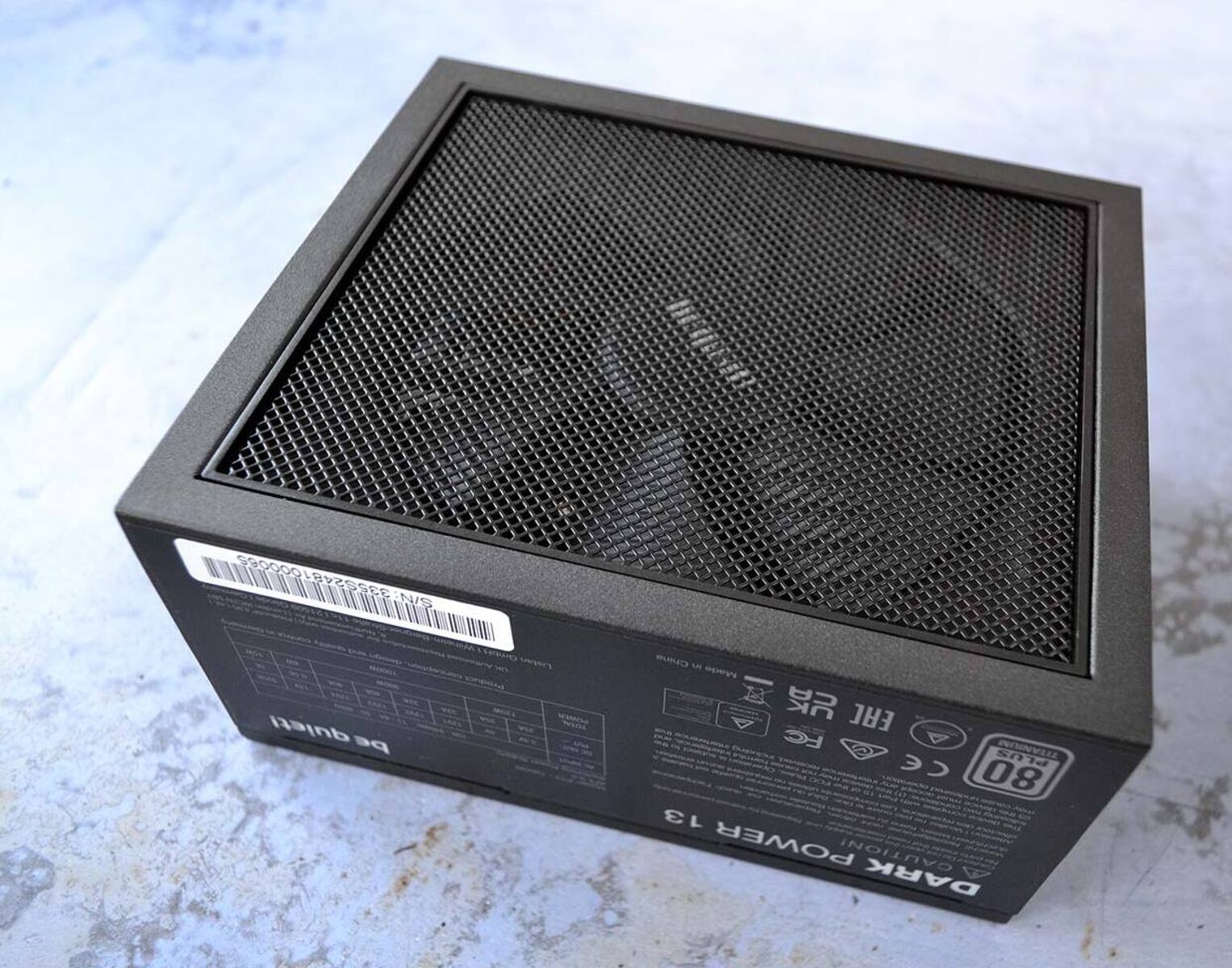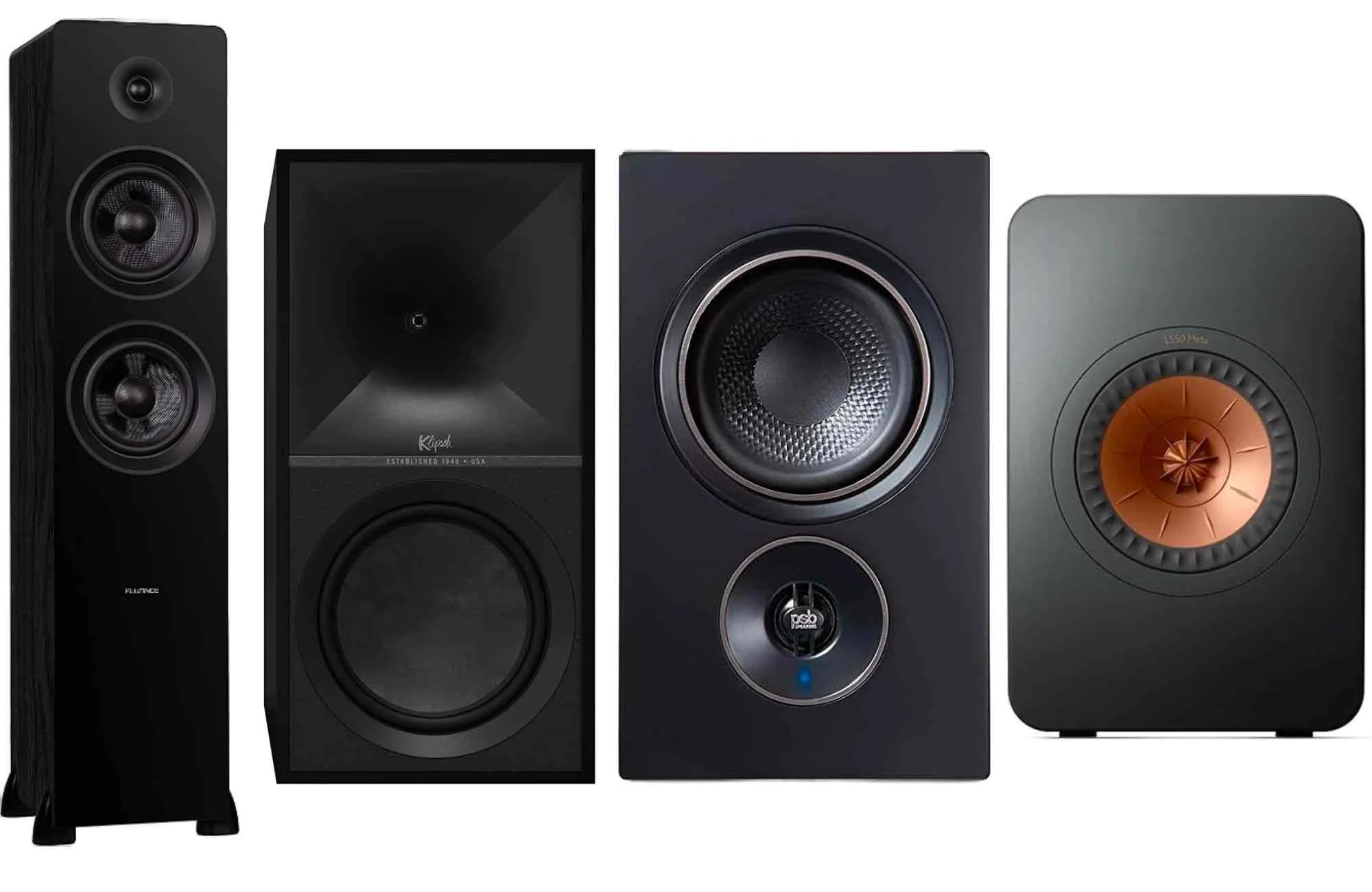Introduction
When it comes to gaming laptops, wattage is an important factor to consider. Understanding how many watts a gaming laptop uses can help you make informed decisions about power consumption, battery life, and overall performance. In this article, we will take a closer look at wattage and its significance for gaming laptops.
Wattage, in simple terms, refers to the amount of power consumed by an electronic device. It is a measure of how much energy the device requires to function properly. In the case of gaming laptops, wattage plays a crucial role in determining the laptop’s performance capabilities and power efficiency.
Gaming laptops are designed to handle resource-intensive games and demanding applications. As a result, they often require more power compared to regular laptops. The higher wattage ensures that the laptop’s components, such as the processor, graphics card, and cooling system, can operate at optimal performance levels without overheating or experiencing a drop in performance.
The wattage of a gaming laptop can vary based on several factors. One of the primary factors is the hardware configuration of the laptop. Laptops with powerful processors, high-end graphics cards, and abundant RAM will likely have a higher wattage requirement to support these components during extensive gaming sessions.
The display size and resolution also influence a gaming laptop’s wattage consumption. Laptops with larger displays and higher resolutions tend to consume more power to deliver smooth gameplay and vibrant visuals.
In addition, the activities you engage in while gaming can impact wattage usage. Running demanding games or heavy applications like video editing software will push the laptop’s components to work harder, increasing overall power consumption.
On average, gaming laptops tend to have a higher wattage compared to regular laptops. While regular laptops typically range between 30 and 60 watts, gaming laptops can consume anywhere from 80 to 250 watts or even higher, depending on the hardware specifications.
Understanding the wattage of your gaming laptop is essential, as it allows you to make better decisions regarding power management. By knowing the approximate wattage, you can adjust your gaming setup accordingly, ensuring that you have an adequate power supply and preventing any potential power-related issues.
When determining the wattage of your gaming laptop, you can refer to the laptop manufacturer’s specifications, user manuals, or consult online resources. These sources will provide you with the necessary information to make an informed estimate of the wattage your gaming laptop requires.
Overall, wattage plays a crucial role in the performance and power efficiency of gaming laptops. Understanding how many watts your laptop consumes can help you optimize your gaming experience and ensure that your device operates efficiently. In the following sections, we will explore how to determine the wattage of your gaming laptop and provide tips to reduce power consumption without compromising performance.
What is wattage?
Before delving deeper into the wattage of gaming laptops, it’s important to understand the concept of wattage itself. Wattage is a unit of measurement that quantifies the rate at which an electrical device consumes or dissipates energy. In simpler terms, it refers to the amount of power needed for a device to function optimally.
Wattage is named after James Watt, a Scottish engineer who made significant contributions to the development of the steam engine during the 18th century. Wattage is denoted by the symbol ‘W’ and is calculated by multiplying the voltage (V) by the current (A) flowing through a device. The formula for calculating wattage is as follows: W = V x A.
In the context of gaming laptops, wattage represents the power required to operate all the internal components of the device, including the processor, graphics card, memory, and display. Since gaming laptops have more robust hardware specifications compared to regular laptops, they typically have higher wattage consumption.
It’s important to note that wattage alone doesn’t determine the performance of a gaming laptop. Higher wattage doesn’t necessarily equate to better performance. Instead, it indicates the laptop’s power requirements to deliver its full potential. Having a higher wattage provides sufficient power for the laptop’s components to operate at optimal levels without encountering issues such as overheating or performance throttling.
Wattage is a critical consideration when choosing a power supply or battery for your gaming laptop. Using a power supply with insufficient wattage may result in the laptop not receiving enough power, leading to performance issues or erratic behavior. On the other hand, a power supply with excessive wattage could be unnecessary and may lead to additional energy consumption.
When it comes to battery life, wattage plays a crucial role. Gaming laptops with higher wattages tend to drain the battery faster, as more power is required to sustain the performance demands of resource-intensive games. It’s essential to choose a gaming laptop with an adequate battery capacity if you intend to play games on the go without frequent access to a power source.
In summary, wattage is the unit of measurement for power consumption in electrical devices. In the case of gaming laptops, wattage reflects the energy requirements of the laptop’s internal components to deliver optimal performance. The wattage of a gaming laptop is a critical consideration for power supply selection and battery life management. Understanding wattage is crucial for ensuring your gaming laptop operates efficiently and performs at its best.
Why is wattage important for gaming laptops?
Wattage plays a vital role in the overall performance and functionality of gaming laptops. Understanding the importance of wattage can help you make informed decisions when choosing a gaming laptop, managing power consumption, and optimizing your gaming experience.
One of the key reasons why wattage is important for gaming laptops is that it directly affects the laptop’s performance capabilities. Gaming laptops are designed to handle resource-intensive games and demanding applications, which require substantial processing power and graphics rendering. Components such as the CPU (Central Processing Unit) and GPU (Graphics Processing Unit) need adequate power to perform efficiently without performance throttling or overheating issues. Higher wattage ensures that the laptop’s components receive sufficient power to deliver optimal performance, resulting in smoother gameplay, faster loading times, and increased frame rates.
In addition to performance, wattage is crucial for power management. Gaming laptops tend to consume more power compared to regular laptops due to their high-performance hardware specifications. By understanding the wattage requirements of your gaming laptop, you can choose a compatible power supply and ensure that your laptop receives an adequate and stable power source for uninterrupted gaming sessions.
Furthermore, wattage is a significant factor to consider when it comes to battery life. The higher the wattage consumption, the more power the laptop requires, leading to a shorter battery lifespan. Gaming laptops with higher wattage demands drain the battery faster, which can be a concern if you frequently use your laptop on the go or in situations where access to a power source is limited. Being aware of your gaming laptop’s wattage can help you manage your power consumption, adjust settings, and optimize battery life accordingly.
Overlooking wattage requirements can lead to performance issues and potential damage to the gaming laptop. If the laptop doesn’t receive adequate power, its components may not function at their full potential, resulting in reduced performance or even system failures. Additionally, insufficient wattage can lead to overheating, as the cooling system may not receive adequate power to effectively dissipate heat generated by the high-performance components. On the other hand, using a power supply with excessively high wattage could be inefficient and lead to unnecessary power consumption.
In summary, wattage is essential for gaming laptops as it directly impacts performance capabilities, power management, and battery life. Understanding the wattage requirements of your gaming laptop enables you to make informed choices, optimize power consumption, and ensure that your laptop operates efficiently and performs at its best during gaming sessions.
Factors that affect a gaming laptop’s wattage
Several factors influence the wattage consumption of a gaming laptop. Understanding these factors is crucial in determining the power requirements and optimizing the performance of your gaming laptop. Let’s delve into the key factors that affect a gaming laptop’s wattage:
- Hardware Configuration: The components of a gaming laptop, such as the processor, graphics card, memory, and storage, significantly impact its wattage consumption. Gaming laptops equipped with high-performance hardware tend to have higher wattage requirements. Powerful processors and graphics cards demand more power to perform resource-intensive tasks, resulting in increased wattage consumption.
- Display Size and Resolution: The size and resolution of the laptop’s display also affect its wattage consumption. Laptops with larger screens and higher resolutions require more power to deliver vibrant visuals and smooth gameplay. Higher refresh rates, such as 120Hz or 144Hz, can also contribute to increased wattage usage.
- Activity Level: The activities you engage in while using your gaming laptop can impact wattage consumption. Running demanding games or running multiple applications simultaneously will increase the power requirements of the laptop’s components, causing overall wattage consumption to rise. Similarly, tasks like video editing or 3D rendering will put additional strain on the hardware, resulting in higher power consumption.
- Performance Settings: The performance settings of your gaming laptop can affect wattage usage. Overclocking, which involves increasing the clock speed of the CPU or GPU, often leads to higher power requirements. Similarly, running the laptop in high-performance mode or enabling features like NVIDIA’s Battery Boost can increase wattage consumption.
- Thermal Management: The cooling system of a gaming laptop plays a critical role in maintaining optimal performance and wattage consumption. If the cooling system is not functioning efficiently, it can lead to increased wattage usage as the components may operate at higher temperatures. Therefore, regularly cleaning the cooling vents and ensuring proper ventilation can help regulate wattage consumption.
By considering these factors, you can have a better understanding of the wattage requirements of your gaming laptop. It allows you to optimize power consumption, ensure stable performance, and prevent overheating issues by choosing appropriate hardware configurations, adjusting display settings, monitoring task activity, and implementing effective thermal management strategies.
The average wattage of gaming laptops
Gaming laptops, with their high-performance components and resource-demanding capabilities, generally have higher wattage requirements compared to regular laptops. The average wattage of gaming laptops can vary depending on several factors, including the hardware configuration and usage patterns. Let’s take a closer look at the typical wattage ranges for gaming laptops:
On average, gaming laptops tend to consume between 80 and 250 watts. However, it’s important to note that this is just a general range, and the actual wattage can vary significantly depending on the specific laptop and its hardware specifications.
Lower-end gaming laptops, with entry-level CPUs and GPUs, tend to have wattage consumption closer to the lower end of the range. These laptops are designed to handle less demanding games and applications, and therefore, they require less power to operate at optimal performance levels.
As you move up to mid-range and high-end gaming laptops, the wattage consumption generally increases. These laptops have more powerful processors, dedicated graphics cards, and higher RAM capacities, which necessitate increased power to deliver smooth gameplay and handle intensive tasks.
Gaming laptops with larger displays and higher resolutions also tend to have higher wattage consumption. The larger screen size and increased pixel density require additional power to produce sharp, vibrant visuals. Additionally, laptops with high-refresh-rate displays, such as 120Hz or 144Hz, may consume more power to achieve smooth and fluid motion during gameplay.
It’s important to note that wattage consumption can spike during demanding activities, such as playing graphically-intensive games or running resource-heavy applications. The laptop’s power draw may increase significantly during these tasks, temporarily exceeding the average wattage range mentioned above.
It’s worth mentioning that gaming laptops with desktop-grade components or those designed for VR gaming have even higher wattage requirements. These laptops are built to deliver top-tier performance and often offer extensive customization options, resulting in a higher power draw to meet the demanding hardware specifications.
Ultimately, the specific wattage consumption of a gaming laptop is influenced by various factors, such as CPU and GPU power requirements, display specifications, activity level, and power management settings. Understanding the average wattage range for gaming laptops can help you choose a suitable power supply, optimize power consumption, and ensure an enjoyable gaming experience without encountering power-related issues.
How to determine the wattage of your gaming laptop
Determining the wattage consumption of your gaming laptop is essential for power management and ensuring optimal performance. While there are several methods to calculate the exact wattage, here are some effective ways to determine the wattage of your gaming laptop:
1. Manufacturer’s Specifications: Check the laptop manufacturer’s website or user manual for the detailed specifications of your gaming laptop. The specifications section usually includes information about the power supply or battery wattage, which can give you a rough estimate of the laptop’s power consumption.
2. Online Resources and Product Reviews: Visit authoritative technology websites or forums dedicated to gaming laptops. These sources often provide detailed reviews and benchmark results that may include power consumption information. Look for reviews specifically mentioning the wattage or power draw of the laptop model you own or plan to purchase.
3. Power Monitoring Tools: Utilize power monitoring tools and software to measure the power consumption of your gaming laptop in real-time. These tools can track the wattage usage while you perform various tasks, such as gaming or running resource-intensive applications. Examples of popular power monitoring tools include HWMonitor, Intel Power Gadget, and GPU-Z.
4. Third-Party Wattage Calculators: Various third-party tools and calculators are available online that can estimate the wattage consumption of your gaming laptop based on its hardware specifications. These calculators typically require you to input information about your processor, graphics card, RAM, and other components to provide an estimated wattage range.
5. Consult with Professionals: If you require precise wattage information or have specific concerns about your gaming laptop’s power consumption, consulting with professionals such as computer technicians or experienced gamers can be beneficial. They can provide insights and guidance based on their knowledge and experience with gaming laptops.
Remember that the wattage estimation obtained through these methods serves as a general guideline. Actual wattage consumption can vary due to factors such as individual hardware variations, laptop settings, and task-specific power requirements. Additionally, wattage consumption may fluctuate based on running applications and power management settings.
By determining the wattage of your gaming laptop, you can make informed decisions regarding power supply selection, battery management, and adjusting performance settings. This knowledge also helps identify any potential power-related issues and allows for better power optimization to enhance your gaming experience.
Tips to reduce the power consumption of your gaming laptop
Managing the power consumption of your gaming laptop is essential for optimizing battery life, reducing energy costs, and minimizing heat generation. Here are some tips to help you reduce the power consumption of your gaming laptop:
1. Adjust Power Settings: Utilize the power management settings of your gaming laptop to optimize power consumption. Configure the settings to balance performance and power efficiency. Lowering the screen brightness, reducing the display timeout period, and enabling power-saving modes can help conserve battery life and reduce wattage usage.
2. Optimize Graphics Settings: Adjust the graphics settings of your games to balance visual quality and performance. Lowering the resolution, disabling anti-aliasing, and reducing graphic effects can significantly reduce the workload on your GPU, resulting in lower power consumption and improved overall performance.
3. Clean the Cooling System: Dust and debris can obstruct the cooling system of your gaming laptop, forcing the components to work harder to maintain optimal temperatures. Regularly clean the cooling vents and fans to ensure efficient heat dissipation, which can reduce power consumption and prevent heat-related performance issues.
4. Manage Background Processes: Close unnecessary programs and background processes that consume processing power and drain your laptop’s resources. Running multiple applications simultaneously can increase power consumption. Use task managers to identify and close resource-intensive processes that are unnecessary while gaming.
5. Update Drivers and Firmware: Keep your laptop’s drivers and firmware up to date. Manufacturers often release updates to optimize performance, improve power efficiency, and fix bugs. Regularly check for updates and install them to ensure your gaming laptop is running with the latest optimizations.
6. Disable Startup Programs: Some applications automatically start with your operating system, consuming processing power and system resources. Disable unnecessary startup programs using the Task Manager or system settings to minimize power consumption during startup and overall use.
7. Use Energy-Efficient Accessories: Consider using energy-efficient peripherals such as keyboards, mice, and external storage devices. These accessories are designed to consume minimal power, helping to reduce overall power consumption and prolong battery life.
8. Opt for Battery Saver Mode: When using your gaming laptop on battery power, enable the battery saver mode. This mode automatically reduces power consumption by optimizing system performance, reducing display brightness, and other power-saving techniques.
9. Manage Background Applications: Close any unnecessary applications running in the background. Programs like chat applications, file-sharing software, or cloud syncing services can consume resources and drain your laptop’s battery faster. Only keep essential applications running while gaming to minimize power usage.
10. Opt for SSDs: Consider upgrading to a solid-state drive (SSD) for your gaming laptop. SSDs are more power-efficient than traditional hard disk drives (HDDs) since they don’t require spinning disks. Using an SSD can reduce power consumption and improve overall system performance.
By implementing these tips, you can significantly reduce the power consumption of your gaming laptop. Not only will this allow for extended battery life, but it will also create a more sustainable and cost-effective gaming experience without compromising on performance or game quality.
Conclusion
Understanding the wattage of your gaming laptop and how to manage its power consumption is crucial for optimizing performance, minimizing energy costs, and enhancing your overall gaming experience. By considering factors such as hardware configuration, display size and resolution, activity level, and performance settings, you can get a better understanding of your gaming laptop’s wattage requirements.
Determining the wattage of your gaming laptop can be done through various methods, such as referencing manufacturer specifications, consulting online resources, utilizing power monitoring tools, and seeking guidance from professionals. This knowledge enables you to make informed decisions about power supply selection, power management settings, and battery life optimization.
Additionally, implementing tips to reduce power consumption, such as adjusting power settings, optimizing graphics settings, cleaning the cooling system, managing background processes, updating drivers, and using energy-efficient accessories, will not only extend battery life but also decrease energy consumption and heat generation.
By effectively managing the power consumption of your gaming laptop, you can strike a balance between performance and energy efficiency, ensuring that your device operates optimally, maintains a longer battery lifespan, and reduces the environmental impact associated with excessive power consumption.
Remember to regularly reassess and optimize your power management strategies as technology advances and new power-saving techniques emerge. By staying mindful of wattage and implementing power-saving measures, you can enjoy immersive gaming sessions while minimizing the impact on both your wallet and the environment.







